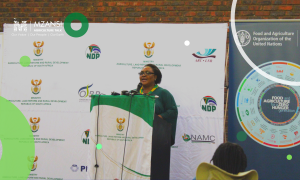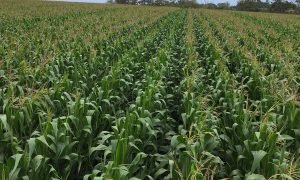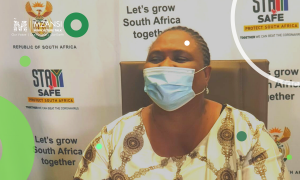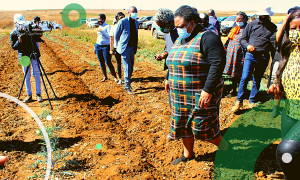In 2019, the City of Ekurhuleni announced it was releasing 56 farms valued at R120 million to local smallholder and subsistence farmers to improve food security, increase tax and revenue, expand food export and attract new investment to the City.
At the time Ekurhuleni mayor Mzandile Masina said that over 1 000 hectares of land will be released to beneficiaries in a programme that will generate about R200 million in revenue for the City through medium-term leases.
The initiative was expected to also enhance the quality of livelihoods and increase job opportunities in the region.
Now on Friday May 22, at the council in Germiston, Masina officially handed over farms to 11 successful bidders.
Said Masina: “The release of farms to the beneficiaries present here today is a turning point in the resolution of the land and agrarian questions in the City of Ekurhuleni. The opportunity to conduct agricultural activities on farms owned by the City also represents an effort by the City to make farmland available to emerging farmers and to further promote sustainable agriculture programmes.
“Today we mark the completion of the first phase of the Rapid Land Release Programme which was advertised over a year ago with suitable entities submitting bids. 11 of these bids were successful and today we will be signing over the farms to these entities. But the event is only the beginning of a long-term process that is underway. In total, 56 farms owned by the City will be leased to subsistence, small-scale and commercial farmers. This means that at least 45 farms are still to be allocated in the next phases of the programme, which is set to begin in June 2021.”
The mayor said that Rapid Land Release Programme is not only a critical intervention in agricultural development in the City but is also a crucial intervention in South Africa’s struggle for land and agrarian reform.
“Not only were the native majority of our country dispossessed of land, but they were also dispossessed of the ability to become farmers through what scholars such as Professors Thembela Kepe and Lungisile Ntsebeza refer to as a process of de-agrarianisation. This refers to mechanisms that the colonial and apartheid governments put in place to force natives to enter the formal labour market and abandon agriculture so that it could be made a preserve of only a White minority. This programme is thus about economic development, social transformation as well as restorative justice,” said Masina.
The mayor said that his administration has stated in every State of the City Address since they assumed office that their objective is to restore dignity to the most disenfranchised residents of the City.
“We have asserted that as a pro-poor government, we would ensure that those hurled at the margins of existence would have lives of value. Today, we have realised that objective, and we must be proud of such a momentous feat.”
Masina congratulated the entities that have won bids to run and manage the social, small-scale and commercial farms that the City has entrusted you with.
“You must recognise that you are not only farmers who must prioritise agricultural production but are also farmers who must ensure transformation in our communities and the country. Treat workers with dignity and remember that a job should lift workers out of poverty, not keep them in it.”
Turning to the economics of Agriculture, Masina mentioned that agricultural products constitute the major items of exports of countries that rely on agriculture.
“Even countries like ours where the agricultural industry has seen a decline over time in terms of contribution to the Gross Domestic Product, agricultural exports are still a significant contributor to the country’s revenue.”
According to the Agricultural Business Chamber, South Africa’s agricultural exports amounted to US$10,2 billion in 2020, which was a 3 percent increase from the previous year. It was also the second-largest level after the record exports of US$10,7 billion in 2018. The exports were primarily underpinned by large domestic agricultural output.
From a destination point of view, continued the Mayor, the African continent and Europe continued to be the largest markets for South Africa’s agricultural exports, absorbing 38 percent and 27 percent of total exports in 2020, in value terms, respectively.
Asia has also remained an important market for South Africa’s agricultural exports, accounting for a 25 percent export share in 2020. And while the Americas and other regions of the world accounted for only 10 percent of the export share, there is evidence of gradual growth for the demand of the country’s agricultural products. Herein, we can see the value of investing in agriculture.
Masina said the evidence suggests that if there is smooth development practice of agriculture, imports are reduced while export increases considerably.
“Over the same period, South Africa’s agricultural imports fell by 8 percent year-on-year to US$5,9 billion. The fall in imports, which corresponded with an increase in exports, subsequently led to a 26 percent year-on-year increase in the country’s agricultural trade surplus to US$4,3 billion. A decline in imports and increase in exports could help to reduce unfavourable balance of payments as well as saving foreign exchange. This amount may be well used to import other essential inputs, machinery, raw-material, and other infrastructure that is helpful for the support of the country’s economic development.”
The Mayor further said that another important value of the agricultural sector is that its growth contributes to marketable surplus.
“Many people engage in manufacturing, mining as well as other non-agricultural sector as the nation develops. All these individuals rely on food production that they might meet from the nation’s marketable surplus. As agricultural sector development takes place, production increases and this leads to expansion of marketable surplus. Agriculture is also a source of raw material to major industries.”
He said the the link between agriculture and other industries, particularly transport, is especially important to a city like Ekurhuleni, which is the nerve-centre of transport and logistics.
“A bulk of agricultural products are transported by roadways from farm to factories, and vice versa. A significant percentage of our country’s internal trade is in agricultural products and the multiplier effect resulting from the industry. A large part of the revenue of government, including from industries such as transport, thus relies on the success of agricultural sector.”
Masina added that another economic area that in which the significance of agriculture is demonstrated is in employment and broader economic growth.
“The sector employs more than 1 million people in South Africa. The National Development Plan has identified irrigation farming as one of the strategies to create a million more jobs in agriculture. The construction of these irrigation schemes, drainage systems as well as other such activities in the agricultural sector is important as it provides larger employment opportunities.”
The geographical location of the City of Ekurhuleni in the industrialised Gauteng Province places it in a unique position to carve a niche in urban aquaculture.
“With our unique geomorphology that is characterised by lakes, ponds and other fluvial systems, we have the potential to become the centre of urban aquaculture. This is especially possible because of our manufacturing capabilities. Research by the Agricultural Business Chamber indicates that aquaculture’s contribution might be more significant in the manufacturing industry as it is an input in the production of many food products.
“An understanding of all this informed the City’s investment in the agricultural sector. We recognised that agriculture goes beyond food security, and to the heart of broader economic development which is the foundation on which we can transform our communities and redress injustices of the past. It was against this backdrop that we instituted the Rapid Land Release Programme which seeks to avail agricultural land and which we are gathered here today to witness.”




















